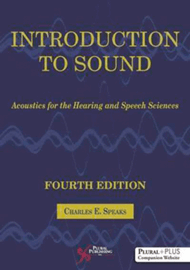The purpose of the text, now in its fourth edition, is to teach acoustics to those in the hearing and speech sciences. This can be a difficult goal because most students and clinicians do not have a physics background, so the mathematics can sometimes seem like an insurmountable obstacle.
As Speaks says, a good grounding in basic acoustic concepts is a critical element in understanding audiological practice and this book would make an excellent core text in education. It may seem less accessible to an individual reader coming to the subject without a physics background, but Speaks has obviously used his experience of teaching the subject to write in an admirably clear manner. His descriptions of basic concepts should be readily understandable by all, and his use of highlights and ‘frequently misunderstood concepts’ is helpful in grasping key points.
Inevitably, the text becomes more mathematical, but Speaks describes logarithms and decibels in an accessible manner with an excellent description of why two equal sound sources increase the sound pressure level by 3dB, which is frequently misunderstood. Chapter 10, ‘Room Acoustics’, is a welcome addition because this is one of the more accessible areas of acoustics that can be readily applied in clinic, e.g. in understanding the effect of acoustics on speech intelligibility. Given that this is a text for hearing and speech sciences, I would have preferred Speaks to take a step further and use these concepts to describe the acoustics of the ear and speech production.
However, I believe this is one of the best-written and accessible texts in the subject and would recommend it as a core text for education and those interested in developing understanding. However, available at over £100, it may be more practical to recommend it to your librarian.




